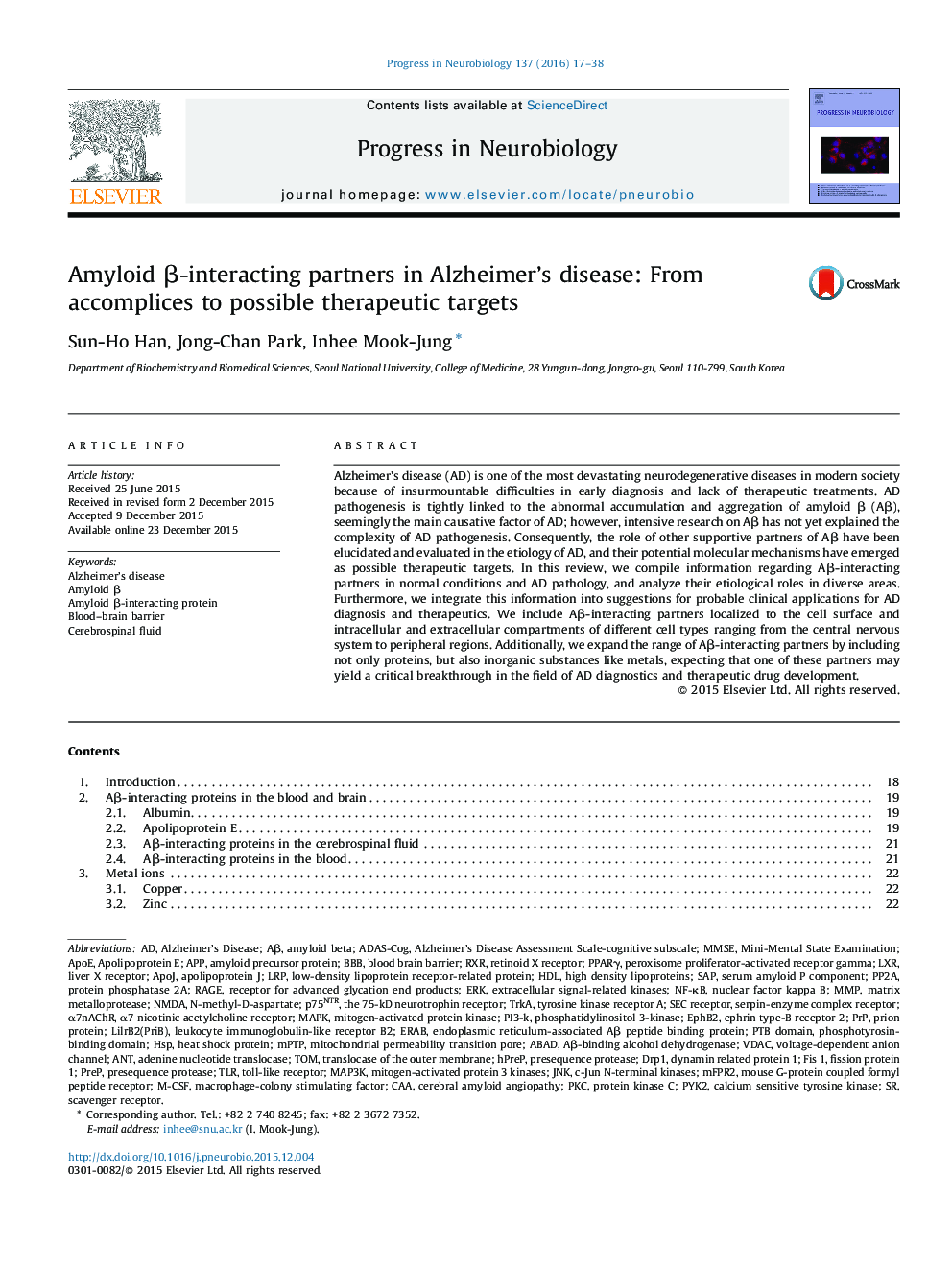| Article ID | Journal | Published Year | Pages | File Type |
|---|---|---|---|---|
| 4353252 | Progress in Neurobiology | 2016 | 22 Pages |
•Aβ-interacting proteins in the blood and brain.•Aβ-interacting metal ions.•Aβ-binding membrane components (receptors).•Intracellular Aβ-binding proteins.•Mitochondrial Aβ-binding components.•Aβ-interacting mediators of immune activation.•Other amyloidogenic proteins.
Alzheimer's disease (AD) is one of the most devastating neurodegenerative diseases in modern society because of insurmountable difficulties in early diagnosis and lack of therapeutic treatments. AD pathogenesis is tightly linked to the abnormal accumulation and aggregation of amyloid β (Aβ), seemingly the main causative factor of AD; however, intensive research on Aβ has not yet explained the complexity of AD pathogenesis. Consequently, the role of other supportive partners of Aβ have been elucidated and evaluated in the etiology of AD, and their potential molecular mechanisms have emerged as possible therapeutic targets. In this review, we compile information regarding Aβ-interacting partners in normal conditions and AD pathology, and analyze their etiological roles in diverse areas. Furthermore, we integrate this information into suggestions for probable clinical applications for AD diagnosis and therapeutics. We include Aβ-interacting partners localized to the cell surface and intracellular and extracellular compartments of different cell types ranging from the central nervous system to peripheral regions. Additionally, we expand the range of Aβ-interacting partners by including not only proteins, but also inorganic substances like metals, expecting that one of these partners may yield a critical breakthrough in the field of AD diagnostics and therapeutic drug development.
